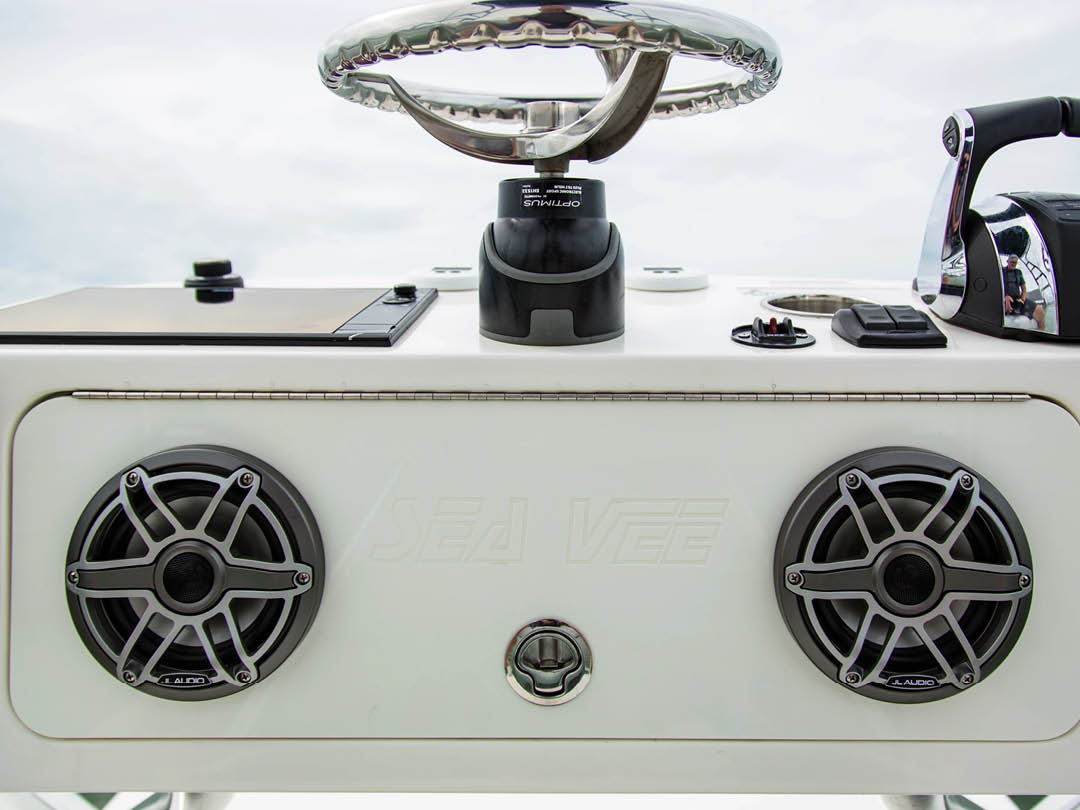Ahoy there! If you’re a proud boat owner, you know that music can truly enhance your time spent on the water. But have you ever struggled to hear your favourite tunes over the sound of crashing waves and roaring engines? Enter marine audio systems – designed specifically for the harsh marine environment and tailored to provide you with the best listening experience possible. In this comprehensive guide, we’ll dive into the world of marine audio, compare them to car audio systems, and provide you with “the ultimate guide to marine audio systems” - tips on choosing, installing, enhancing, and maintaining your boat’s stereo system.
Key Takeaways
-
This article provides an ultimate guide to marine audio systems, detailing components and maintenance for optimal performance.
-
Marine audio equipment offers water resistance, durability and improved sound quality compared to car audio systems.
-
Factors such as compatibility, budget and desired performance level must be considered when selecting a marine system. Integration of SiriusXM satellite radio & streaming services can enhance the experience.
Understanding Marine Audio Systems
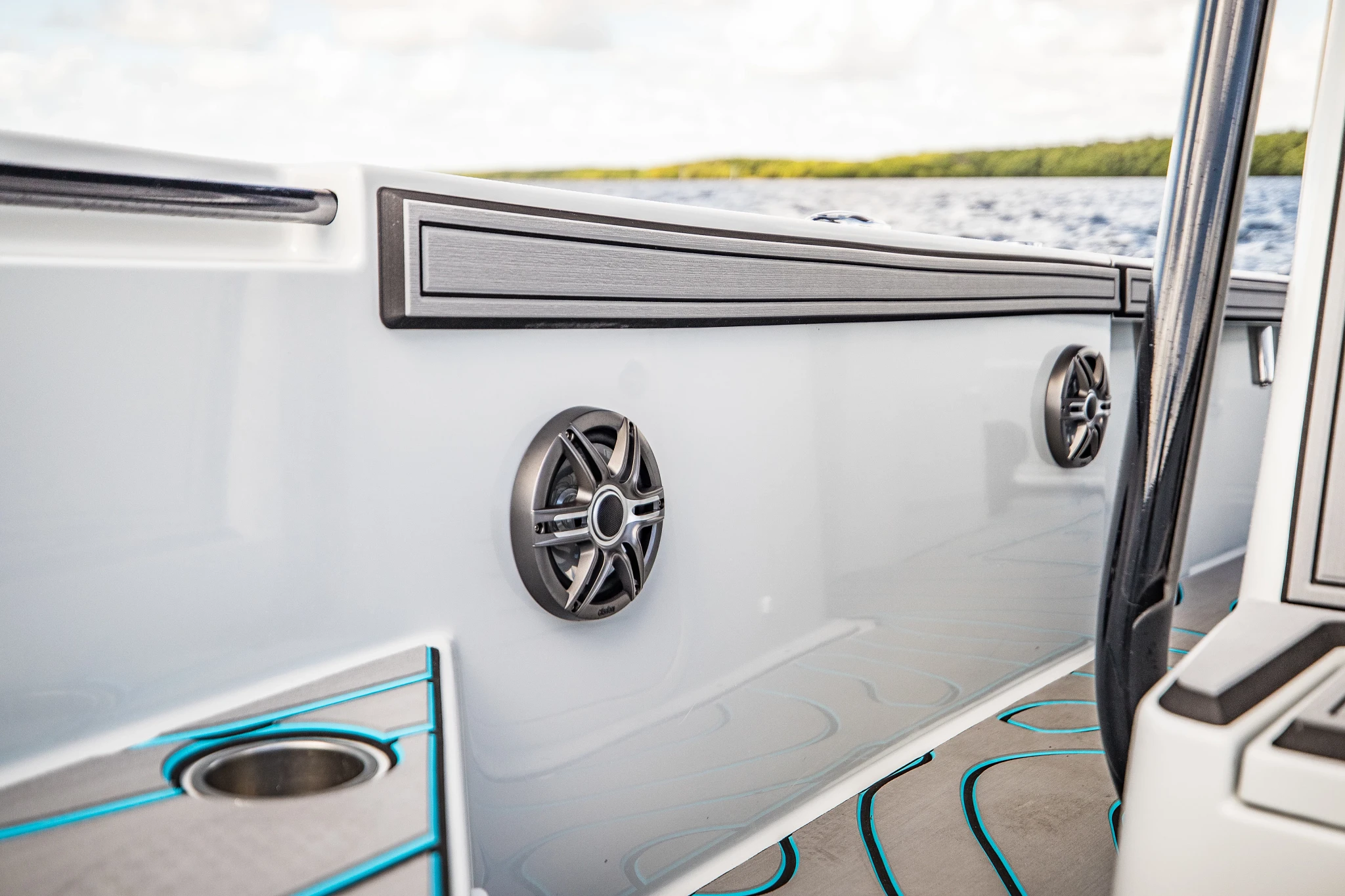
Imagine sailing off into the sunset with the perfect soundtrack accompanying you. Every boat owner should consider investing in a high-quality marine audio system. These systems are robust, built to endure marine challenges like salt water, humidity, and fluctuating temperatures. They consist of components specifically engineered for marine use, ensuring optimal performance and durability.
But what sets marine audio systems apart from their car audio counterparts? The key lies in the marine-specific equipment and design. This not only guarantees the longevity and reliability of your system but also delivers the great sound you deserve while enjoying your time on the water.
We will examine the components of marine audio systems and why using marine-specific equipment matters.
Marine Audio Components
A marine audio system, also known as a marine stereo system, consists of several components that work together to provide the perfect soundtrack for your adventures at sea. These components, which are essential for high-quality marine stereo systems, include a stereo system with:
-
Receivers
-
Speakers
-
Subwoofers
-
Amplifiers
-
Wiring
All of these components are designed specifically for marine use, with features that make them resistant to water, salt, and other environmental challenges. Choosing components that are compatible with each other, and suited to the unique challenges of the marine environment, will ensure optimal performance and durability.
Considerations when selecting marine speakers should include:
-
Power handling capability
-
Weatherproof cones
-
Rubber surrounds
-
UV-resistant grilles
These features are key when making your selection. Subwoofers and amplifiers should also be chosen with care, as they can greatly enhance the overall sound quality and volume of your system. Moreover, waterproof, wired remote controls for marine radios offer added convenience and protection, allowing you to control your radio from various locations on the boat without exposing it to harsh elements.
Importance of Marine-Specific Equipment
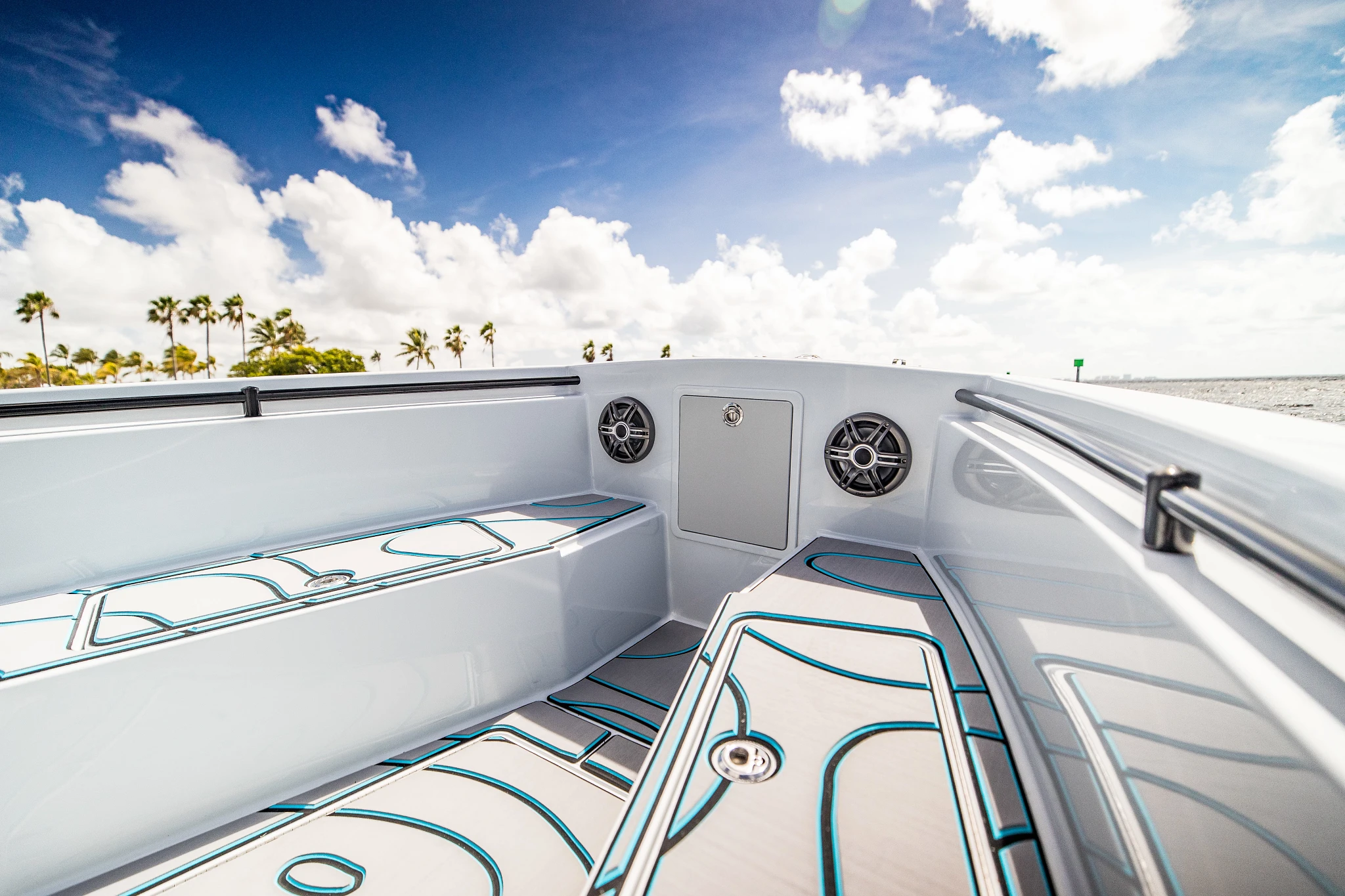
You might be tempted to use standard car audio equipment, such as a car stereo, on your boat, but this could be a costly mistake. Marine-specific equipment is designed with the unique challenges of the marine environment in mind, such as water, humidity, and inclement weather. Using marine-specific equipment ensures that your audio system remains functional and durable under these harsh conditions.
Key features of marine audio gear include:
-
Water resistance
-
Waterproofing
-
UV resistance
-
Anti-corrosion properties
Investing in marine-specific equipment ensures your audio system’s longevity and top-tier sound quality during your boating adventures, especially when upgrading your boat’s existing radio to a boat’s stereo system.
Comparing Marine and Car Audio Systems
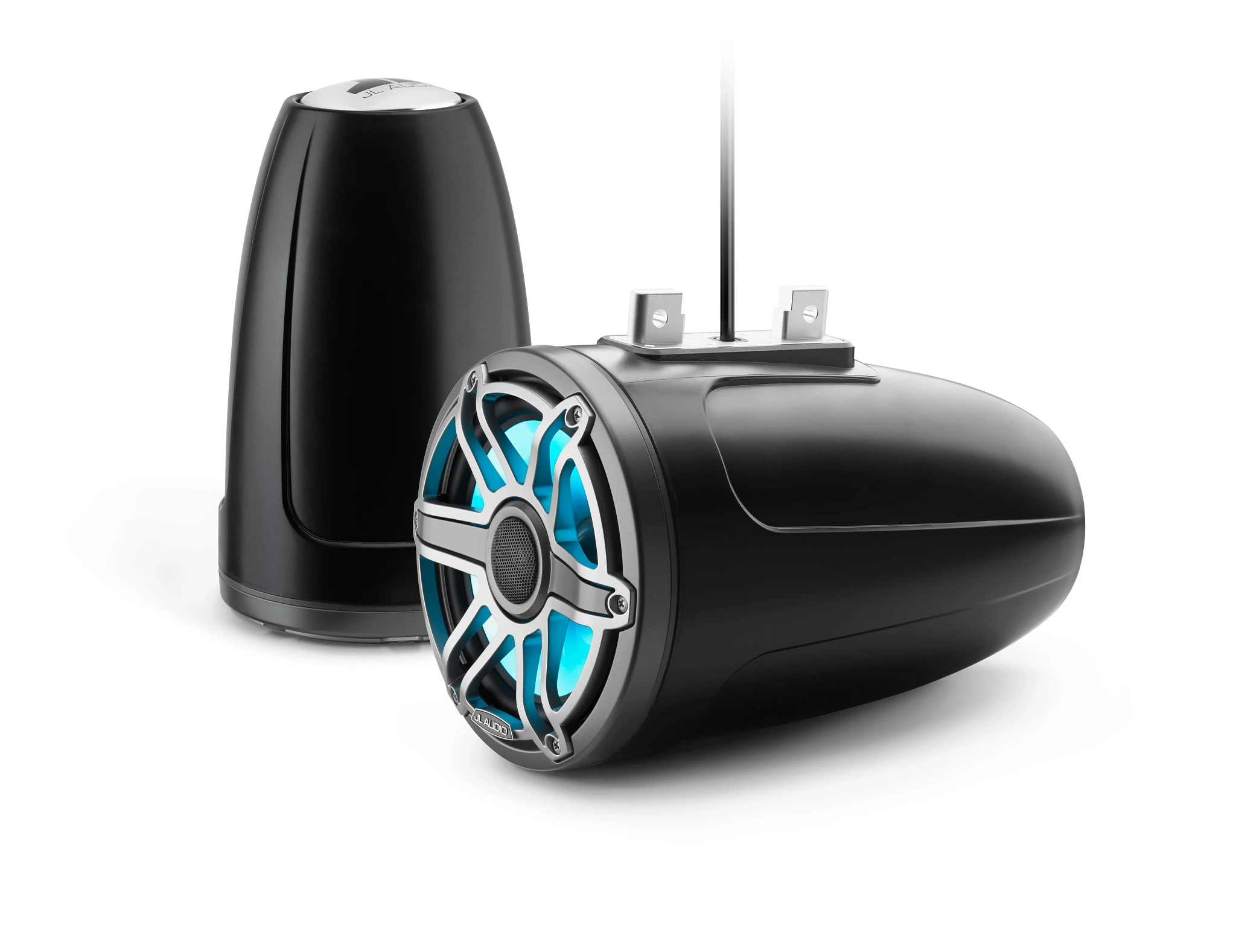
At first glance, marine and car audio systems might seem quite similar, but there are crucial differences that set them apart. As mentioned earlier, marine audio systems are designed to endure water, humidity, and inclement weather, while car audio systems are not. Moreover, marine audio systems are optimised for open-air settings, offering superior sound quality and performance on boats compared to their car audio counterparts.
We will scrutinise the differences between marine and car audio systems, focusing on water resistance, durability, sound quality, and performance. For information, also see our guide on the Best Marine Audio Brand.
Water Resistance and Durability
The durability of marine electronics is heavily dependent on their water resistance, as they may not last an entire season without it. Unlike car audio systems, marine audio systems are built to withstand constant exposure to water, humidity, and other harsh weather conditions. Materials such as plastic cones (e.g. polypropylene) and rubber surrounds are most suitable for marine audio systems due to their weather protection and corrosion resistance.
Waterproof and wired remote controls for marine radios also contribute to the overall water resistance and durability of marine audio systems. Choosing marine-specific equipment guards your audio system’s functionality and durability against even the most challenging marine environments.
Sound Quality and Performance
While car and marine audio systems may share some similarities, the main difference lies in the sound quality and performance. Marine audio systems are designed to optimise open-air environments, allowing for improved sound quality and performance on boats. They are engineered to project sound over extended distances and boast more power than car audio systems.
Factors that influence sound quality and performance in boat speakers include:
-
The size and shape of the boat
-
The type of speakers employed
-
The power of the amplifier
-
The positioning of the speakers
Investing in high-quality marine audio components guarantees that your favourite tunes will be heard loud and clear, even over the sound of crashing waves and roaring engines.
Choosing the Right Marine Audio System for Your Boat
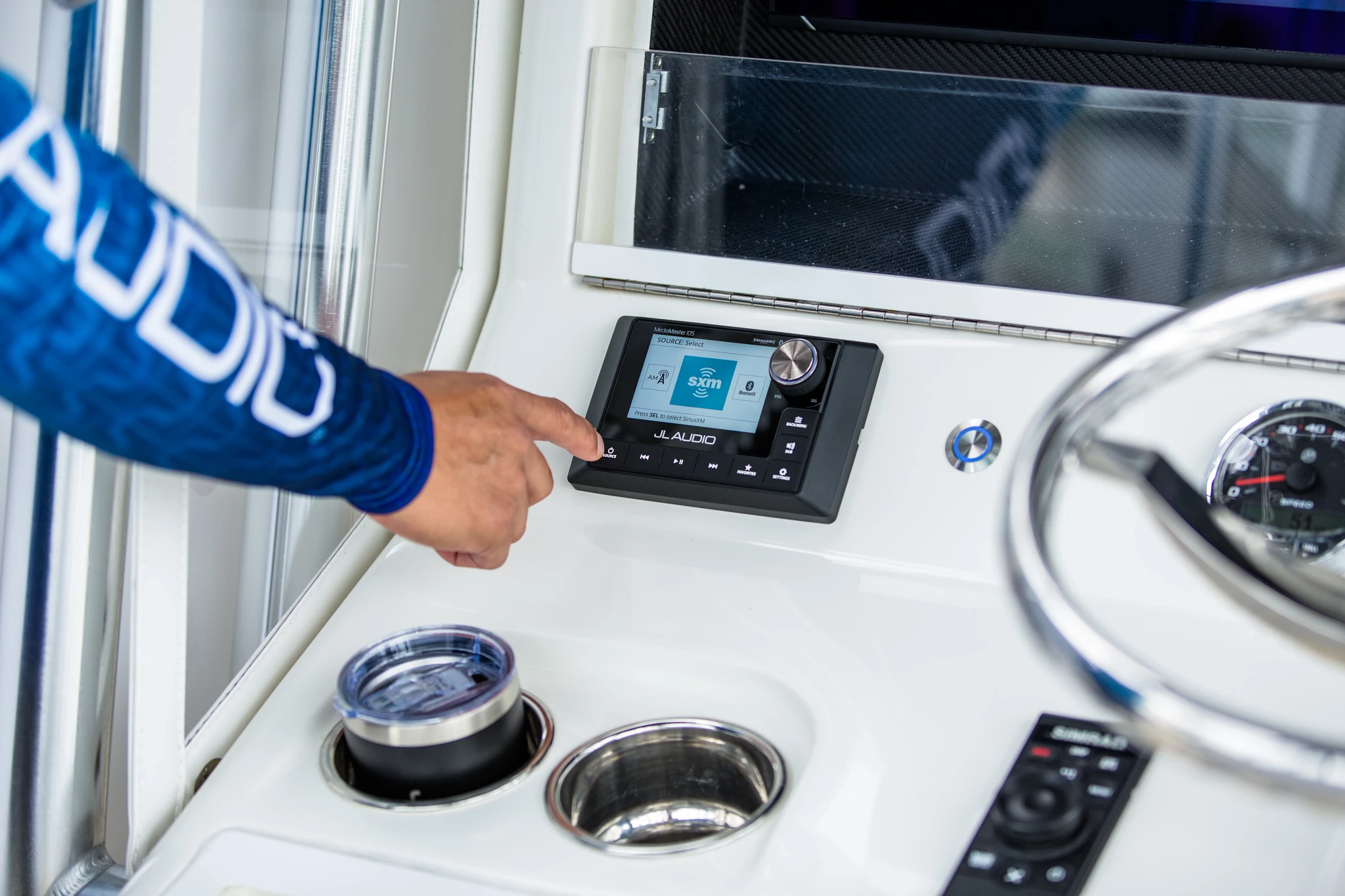
Now that you understand the differences between marine and car audio systems, it’s time to select the optimal marine audio system for your boat. This requires careful consideration of various factors, such as compatibility of components, budget, and desired performance level.
Here are some tips to guide your decision-making process, focusing on matching system components and balancing budget and performance.
Matching System Components
Selecting compatible components is crucial for constructing a unified and high-functioning marine audio system. When choosing a marine audio system for your boat, it is important to ensure compatibility among the following components:
-
Receivers
-
Speakers
-
Subwoofers
-
Amplifiers
By ensuring compatibility among these components, you can create a cohesive and high-performing audio system that delivers the best possible sound quality.
Top brands to consider for your marine audio components include:
-
Sony
-
Fusion
-
Garmin
By choosing a high-quality, compatible head unit and other components from reputable brands, you can be confident in the performance and durability of your marine audio system.
Balancing Budget and Performance
Choosing marine audio equipment requires a balance between your budget and the desired performance level. This ensures that you receive the highest value for your investment. While it might be tempting to splurge on the most expensive components, it’s essential to strike a balance between budget and performance.
Opt for marine audio components that offer the most cost-effectiveness, such as the Hertz Marine Amplifier, Sony DSXA410BT Digital Media Receiver and XS-MP1621 Speakers, and JL Audio M200/2. By selecting equipment that provides the best performance within your budget, you can enjoy an outstanding marine audio experience without breaking the bank.
Installation Tips for Marine Audio Systems
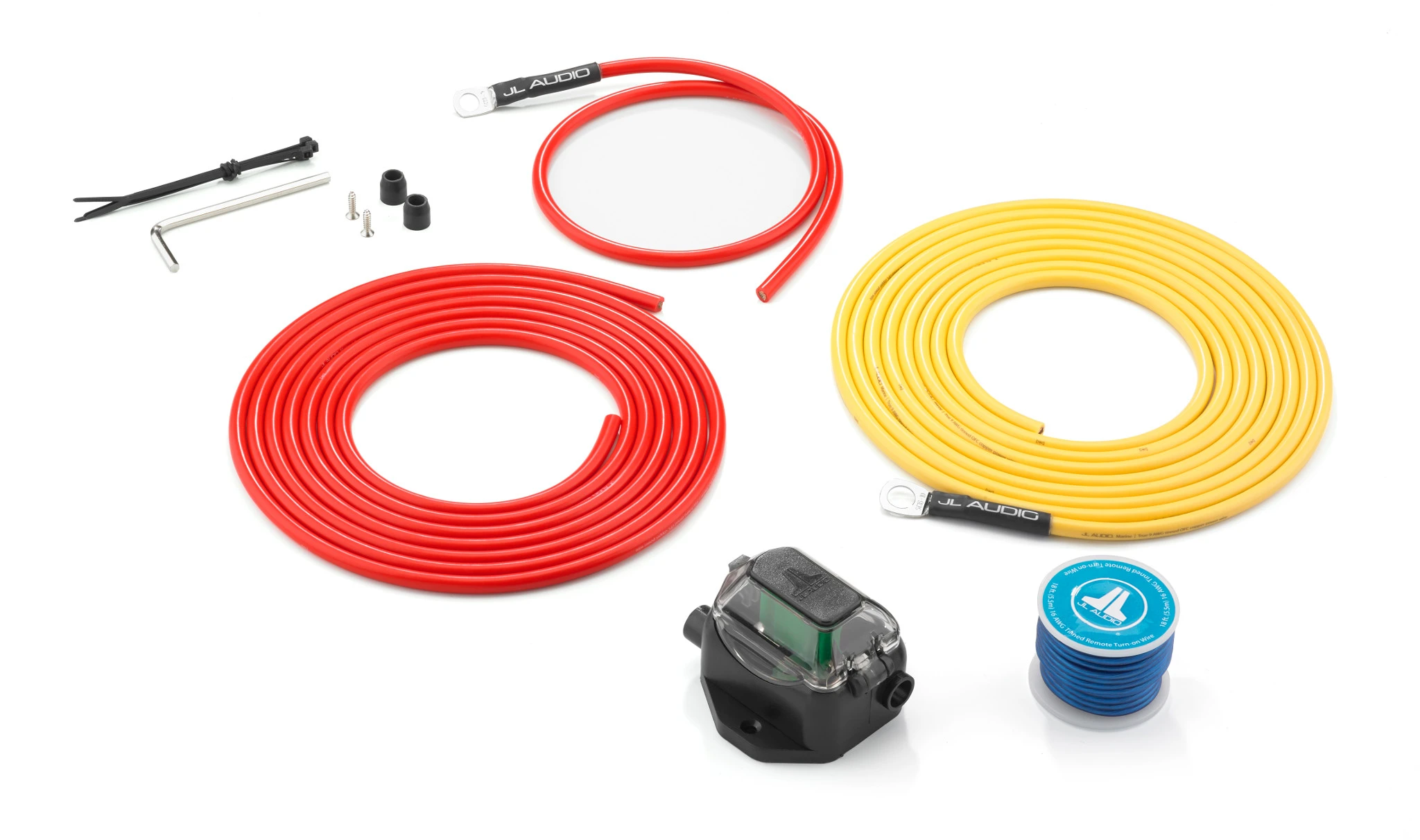
Now that you’ve chosen the perfect marine audio system for your boat, it’s time to install it. Proper installation is essential for achieving optimal sound quality and system performance.
Here are some tips on component placement and wiring connections to maximise your marine audio system’s performance.
Component Placement
The placement of your marine audio components plays a crucial role in the overall sound quality and performance of your system. Factors to consider when determining the placement of audio components on your boat include:
-
Power and space restrictions
-
The model of the boat
-
Individual requirements
-
Personal preferences
Taking these factors into account will help you optimise the sound quality and performance of your marine audio system.
Amplifiers and subwoofers can be fitted in various locations on a boat. These include compartments under the seats, under the bow, or on a wakeboard tower. Proper grounding of electrical components is also essential for optimal operation. Assuring proper placement of components will yield optimal sound quality and system performance.
Wiring and Connections
Securing and waterproofing wiring connections is paramount for preserving the efficacy and durability of your marine audio system. To ensure optimal connections, we recommend:
-
Soldering all wiring connections
-
Using marine-rated wiring
-
Ensuring the wiring harness is compatible with the stereo wiring
-
Keeping the length of speaker wires below 20 feet
Adhering to the US Coast Guard Regulations and ABYC standards is recommended for optimal safety and reliability when wiring and connecting your marine audio system. Adhering to these guidelines will help maintain your marine audio system’s longevity and performance.
Enhancing Your Marine Audio Experience
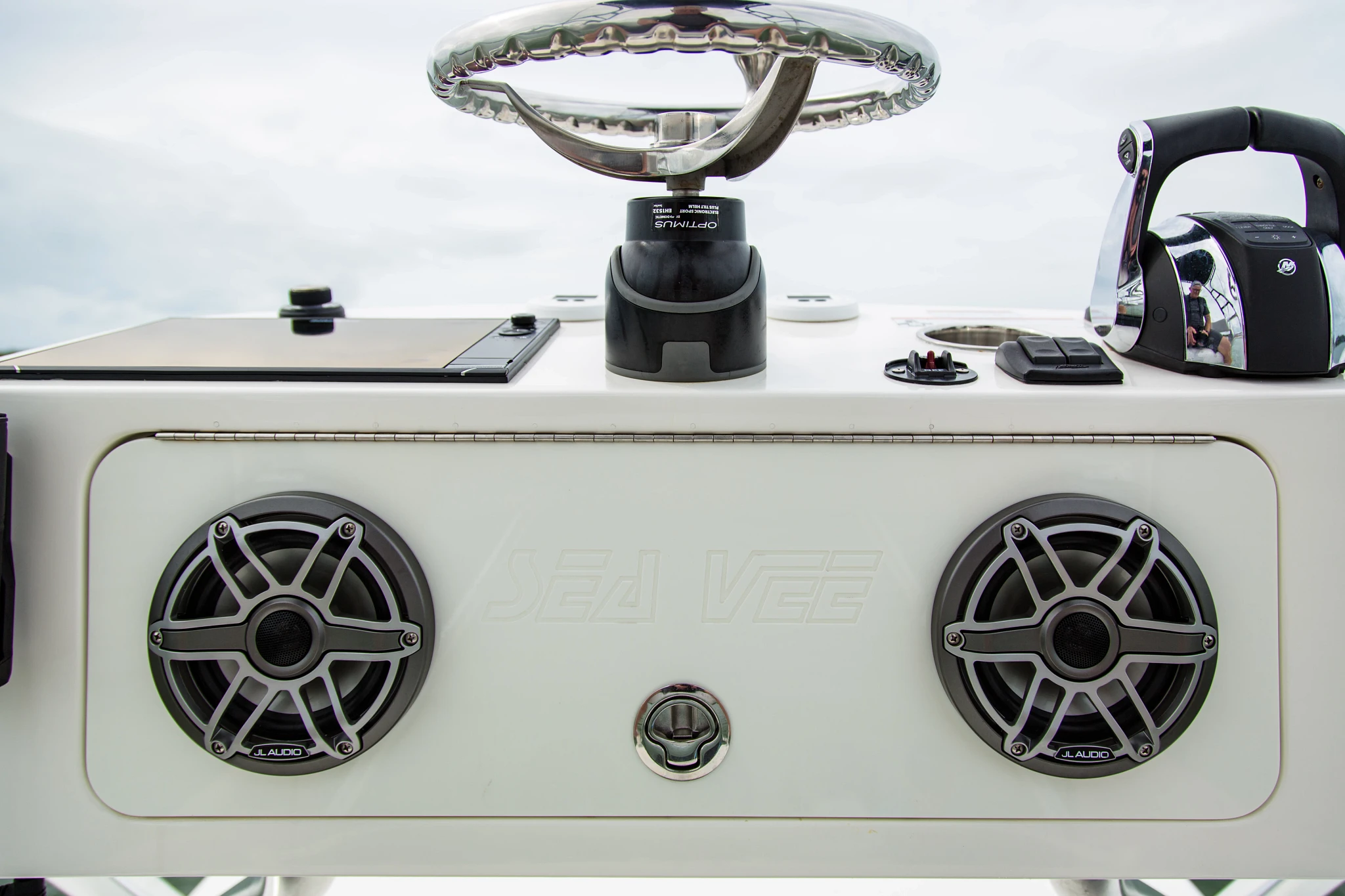
Once your marine audio system is installed and functioning, you may want to consider enhancing your audio experience even further with a marine stereo. We will discuss how adding subwoofers and amplifiers, as well as integrating satellite radio and streaming services, can enhance your waterborne listening experience.
Adding Subwoofers and Amplifiers
Adding subwoofers and an external amplifier to your marine audio system can significantly enhance sound quality and volume. Subwoofers amplify the bass output, while amplifiers enable superior sound quality at high volumes and a range of settings between low and high volumes.
Some highly regarded subwoofers for marine audio systems include the JL Audio M3-10IB-, Fusion Signature Series 3i, and JL Audio M6-10IB. For amplifiers, consider the JL Audio MV1000/5i and Fusion Apollo Marine Amplifier as they provide superior performance and durability for marine environments.
Integrating Satellite Radio and Streaming Services
Integrating satellite radio and streaming services into your marine audio system, including marine radio, provides you with a convenient way to access your preferred music and content while on the water. SiriusXM satellite radio and popular music streaming services such as Pandora and Spotify are the most recommended options for marine audio systems.
Integrating these services into your marine audio system allows for a seamless listening experience during sailing, fishing, or simply relaxing on the water. Enhancing your marine audio experience not only adds to the enjoyment of your boating adventures but also creates an unforgettable atmosphere for you and your passengers.
Maintaining Your Marine Audio System
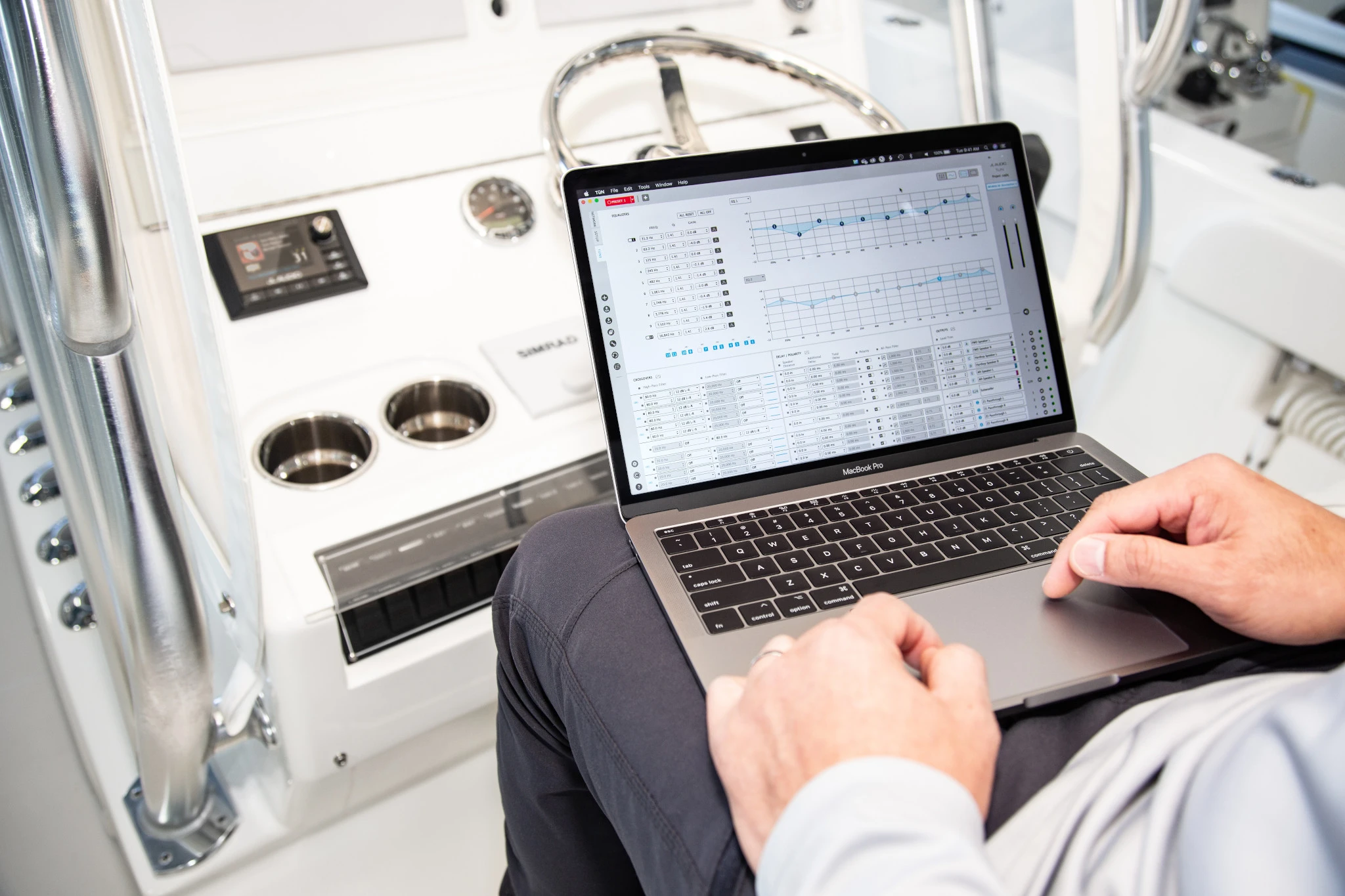
Proper maintenance is key to ensuring the longevity and optimal performance of your marine audio system. We will offer tips on cleaning and maintaining your marine audio system and protecting equipment from the elements.
Cleaning your marine audio system is essential for keeping it in good condition.
Cleaning and Maintenance
Regular cleaning and maintenance of your marine audio system can help extend its life and guarantee optimal functioning. To ensure optimal performance, follow these steps:
-
Use compressed air to clean out air vents and remove dust from around the components.
-
Regularly clean the system to prevent dust build-up or moisture.
-
Keep the engine maintenance areas clean.
By following these steps, you can keep your marine audio system in top condition.
Adhering to these cleaning and maintenance practices will extend your marine audio system’s lifespan and maintain its sound quality and performance.
Protecting Equipment from the Elements
Ensuring marine audio equipment is protected from the elements is imperative for preserving its longevity and optimal performance. Some effective ways to protect marine audio equipment include:
-
Using waterproof covers and UV-resistant materials
-
Using plastic cones (e.g. polypropylene) and rubber surrounds for speakers
-
Using weatherproof faceplate covers
-
Using watertight remote controls
-
Using UV stable materials
By implementing these protective measures, you can ensure that your marine audio equipment stays in top condition for a long time.
Additionally, marine insulation materials can provide optimal sound protection. Further measures that can be taken to safeguard marine audio equipment include employing waterproof enclosures, mounting the equipment in a sheltered area, and applying a protective coating.
Shielding your marine audio equipment from the elements will safeguard its longevity and help maintain top sound quality during your boating adventures.
Summary
In conclusion, investing in a high-quality marine audio system can greatly enhance your boating experience. By understanding the components and importance of marine-specific equipment, selecting the right system, installing and maintaining it properly, and enhancing the audio experience with subwoofers, amplifiers, and streaming services, you can create the perfect soundtrack for your time on the water. So, go ahead and set sail with your favourite tunes, and let the music guide you through your next nautical adventure!
See our guide; Installing Sound System In Boat for more information.
Frequently Asked Questions
Which brand has the best marine speakers?
Based on expert reviews, the best marine speaker is the JL Audio M6-100CT. It offers superior sound quality and durable design.
How many channels do I need in marine amplifier?
For a single pair of speakers, you will need a 2-channel amplifier. However, if you plan to add another set of speakers in the future, it is recommended to get a 4-channel amplifier now.
How can I make my marine speakers louder?
Adding a subwoofer and amplifier will give you deeper, booming bass tones and boost the volume of your marine speakers so they can overpower noise from wind, waves and engines. Avoid car-type stereos as their performance tends to deteriorate over time.
What is the difference between marine audio and car audio?
Marine audio is designed to handle the outdoor elements, whereas car audio is designed to be safely tucked away in the interior of a car.
What are the main components of a marine audio system?
A marine audio system is composed of receivers, speakers, subwoofers, amplifiers, and wiring specially designed to withstand water and salt exposure.


